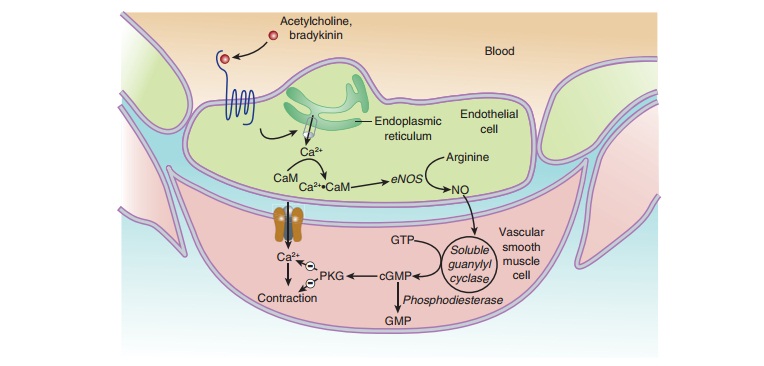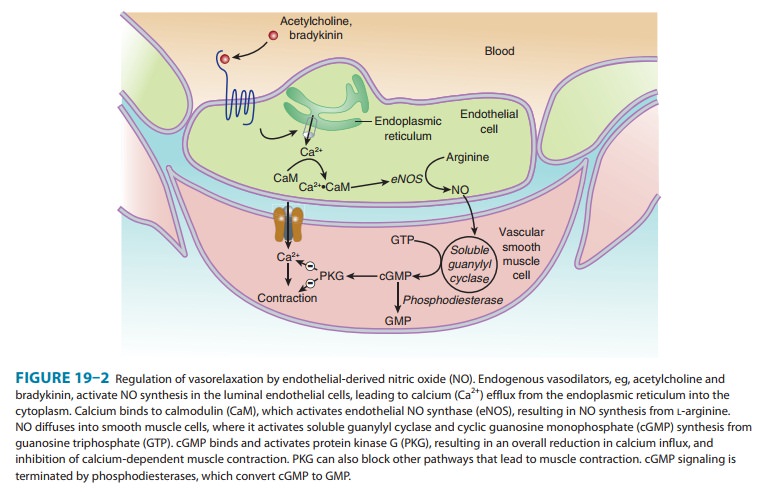Chapter: Basic & Clinical Pharmacology : Nitric Oxide
Vascular Effects - Nitric Oxide in Disease

NITRIC OXIDE IN
DISEASE
VASCULAR EFFECTS
NO
has a significant effect on vascular smooth muscle tone and blood pressure.
Numerous endothelium-dependent vasodilators, such as acetylcholine and
bradykinin, act by increasing intracel-lular calcium levels in endothelial
cells, leading to the synthesis of NO. NO diffuses to vascular smooth muscle
leading to vasorelax-ation (Figure 19–2). Mice with a knockout mutation in the
eNOS gene display increased vascular tone and elevated mean arterial pressure,
indicating that eNOS is a fundamental regulator of blood pressure.

Apart
from being a vasodilator and regulating blood pressure, NO also has
antithrombotic effects. Both endothelial cells and platelets contain eNOS,
which acts via an NO-cGMP pathway to inhibit platelet activation, an initiator
of thrombus formation. Thus, in diseases associated with endothelial
dysfunction, the associated decrease in NO generation leads to an increased
pro-pensity for abnormal platelet function and thrombosis. NO may have an
additional inhibitory effect on blood coagulation by enhancing fibrinolysis via
an effect on plasminogen.
NO also protects against atherogenesis. A major antiathero-genic mechanism of NO involves the inhibition of proliferation and migration of vascular smooth muscle cells. In animal models, myointimal proliferation following angioplasty can be blocked by NO donors, by NOS gene transfer, and by NO inhalation. NO reduces endothelial adhesion of monocytes and leukocytes, which are early steps in the development of atheromatous plaques. This effect is due to the inhibitory effect of NO on the expression of adhesion molecules on the endothelial surface. In addition, NO may act as an antioxidant, blocking the oxidation of low-density lipoproteins and thus preventing or reducing the formation of foam cells in the vascular wall. Plaque formation is also affected by NO-dependent reduction in endothelial cell permeability to lipo-proteins. The importance of eNOS in cardiovascular disease is supported by experiments showing increased atherosclerosis in animals treated with eNOS inhibitors. Atherosclerosis risk factors, such as smoking, hyperlipidemia, diabetes, and hypertension, are associated with decreased endothelial NO production, and thus enhance atherogenesis.
Related Topics